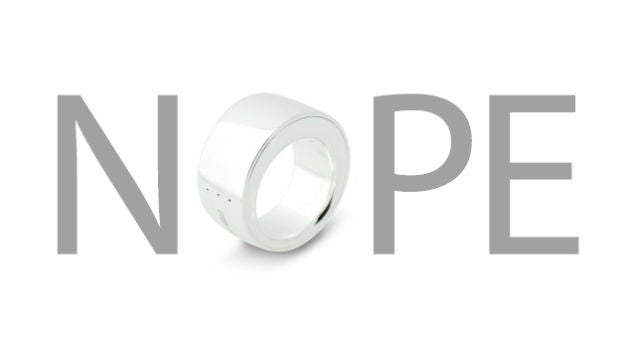[머니투데이 방윤영 기자][편집자주] 벤처인이 겪는 고충과 애환, 웃음과 환희 등 밀당 스토리를 진솔하게 전해드립니다.
[[벤처밀당]창업대회가 대학생 공모전으로 변질되는 안타까운 현실 ]
#어떤 스타트업은 사업 아이템을 세번씩 바꿔가면서 창업경진대회에 나가더라고요. 3군데 이상 참여해 상금으로 최소 1억원은 타갔습니다. 요즘은 애플리케이션(앱) 하나 쉽게 만들 수 있는 시대니 창업대회서 상금 타는 건 그리 어려운 일은 아니잖아요. 그래도 창업에 절실한 마음으로 시작한 스타트업이 아니라 '그냥 한 번 해볼까?' 혹은 '스펙을 쌓기 위해서' 시작한 스타트업이 상금을 휩쓸어 가 안타까운 마음이 듭니다.
다수의 창업대회에서 심사위원으로 활동한 한 벤처업계 관계자의 이야기입니다.
요즘 정부의 창조경제 활성화 정책 발표 이후 제2의 창업붐으로 각종 창업경진대회가 개최되고 있습니다. 미래창조과학부, 중소기업청 등 관련부처는 이번 달에만 13건 이상의 창업대회를 개최했습니다. 민간 기관에서 개최하는 대회까지 합치면 그 수는 배 이상이 될 것입니다. "매달 새로 생기는 스타트업 수보다 창업대회 수가 더 많을 것"이라는 우스갯소리도 나옵니다.
창업대회가 봇물을 이루고 있다보니 한 스타트업이 여러 대회를 참가해 상금을 얻어가는 소위 '상금 저격꾼'들이 나타나고 있습니다. 스타트업이 초기기업이다보니 아직 시제품이나 서비스가 출시되지 않아도 '아이디어' 하나만으로 평가를 받을 수 있기에 가능합니다. 위 사례처럼 마치 대학생이 공모전에 참여하듯 상금을 타기 위해 창업대회에 참가하는 스타트업도 적지 않게 나타나고 있습니다.
문제는 창업에 절실함 마음이 없지만 기발한 아이디어가 있는 스타트업이 상금을 휩쓸어 가는 부작용도 발생하고 있다는 점입니다. 이들 '상금 저격꾼'들은 그저 창업대회용 발표 자료를 잘 만들고 훌륭한 피칭을 할 뿐, 정작 사업 아이디어를 전혀 실행시킬 생각은 안하고 또 다른 창업대회에 참가하는 것만 기웃거립니다. 정작 창업 종잣돈이 절실한 스타트업은 창업대회 상금도 타지 못해 생존를 위해 고군분투하고 있는데 말입니다.
이와 관련 창업지원 유관기관 관계자는 "대부분의 창업대회가 거의 똑같은 심사위원이 비슷한 심사 기준으로 평가하기 때문에 다른 대회에서 우승했던 팀이 계속해서 우승하게 되는 것 같다"며 "현재 창업대회는 많은 스타트업에 기회가 돌아가지 못하는 프로세스"라고 말했습니다.
실제로 몇몇 VC(벤처캐피탈) 심사역들은 창업대회에서 우승했던 이력이 있는 스타트업이 다른 창업대회에 지원할 경우 아예 평가대상에서 제외하기도 했습니다.
기본적으로 VC의 눈은 창업대회 심사위원으로 나서는 대학 교수나 기관 관계자와 완전히 다릅니다. 언론이나 정부가 주목하지 않은 스타트업이 해외에서 투자를 유치한 사례도 있습니다.
게임 일러스트 제작 플랫폼 '레인보우닷'을 서비스하는 스타트업 엠바이트는 지난 7월 일본 VC '글로벌 브레인'으로부터 투자를 유치했습니다. 창업대회나 한국에서 전혀 눈여겨 보지 않던 스타트업을 글로벌 VC가 발굴해낸 겁니다. 엠바이트는 올해로 창업 4년차 입니다.
지난달 한국을 찾은 글로벌 VC인 라쿠텐벤처스의 안세민 매니징 파트너는 "스타트업에게 '성공 못할 것'이라는 평가나 조언은 절대 하지 않는다"며 "스타트업의 미래를 판단할 역량도 없을 뿐 아니라 스타트업의 미래는 아무도 예견할 수 없기 때문"이라고 말했습니다.
앞으로는 좀 더 다양한 스타트업에 고루 기회가 돌아가는 프로세스나 컨트롤 타워를 만들 필요가 있다는 지적이 나오고 있습니다. 아무도 스타트업의 미래를 장담할 수 없기에 소수 스타트업에 지원금이 집중되는 사태를 개선할 필요가 있다는 겁니다.
[내 삶을 바꾸는 정치뉴스 'the 300' 바로가기]['스페셜 걸' 포토][손안의 경제뉴스 머니투데이 모바일웹]['취업의 모든 것' 잡드림 ]
방윤영기자 byy@mt.co.kr
[[벤처밀당]창업대회가 대학생 공모전으로 변질되는 안타까운 현실 ]
 |
| /사진=이미지베이스(Imagebase) |
다수의 창업대회에서 심사위원으로 활동한 한 벤처업계 관계자의 이야기입니다.
요즘 정부의 창조경제 활성화 정책 발표 이후 제2의 창업붐으로 각종 창업경진대회가 개최되고 있습니다. 미래창조과학부, 중소기업청 등 관련부처는 이번 달에만 13건 이상의 창업대회를 개최했습니다. 민간 기관에서 개최하는 대회까지 합치면 그 수는 배 이상이 될 것입니다. "매달 새로 생기는 스타트업 수보다 창업대회 수가 더 많을 것"이라는 우스갯소리도 나옵니다.
창업대회가 봇물을 이루고 있다보니 한 스타트업이 여러 대회를 참가해 상금을 얻어가는 소위 '상금 저격꾼'들이 나타나고 있습니다. 스타트업이 초기기업이다보니 아직 시제품이나 서비스가 출시되지 않아도 '아이디어' 하나만으로 평가를 받을 수 있기에 가능합니다. 위 사례처럼 마치 대학생이 공모전에 참여하듯 상금을 타기 위해 창업대회에 참가하는 스타트업도 적지 않게 나타나고 있습니다.
문제는 창업에 절실함 마음이 없지만 기발한 아이디어가 있는 스타트업이 상금을 휩쓸어 가는 부작용도 발생하고 있다는 점입니다. 이들 '상금 저격꾼'들은 그저 창업대회용 발표 자료를 잘 만들고 훌륭한 피칭을 할 뿐, 정작 사업 아이디어를 전혀 실행시킬 생각은 안하고 또 다른 창업대회에 참가하는 것만 기웃거립니다. 정작 창업 종잣돈이 절실한 스타트업은 창업대회 상금도 타지 못해 생존를 위해 고군분투하고 있는데 말입니다.
이와 관련 창업지원 유관기관 관계자는 "대부분의 창업대회가 거의 똑같은 심사위원이 비슷한 심사 기준으로 평가하기 때문에 다른 대회에서 우승했던 팀이 계속해서 우승하게 되는 것 같다"며 "현재 창업대회는 많은 스타트업에 기회가 돌아가지 못하는 프로세스"라고 말했습니다.
실제로 몇몇 VC(벤처캐피탈) 심사역들은 창업대회에서 우승했던 이력이 있는 스타트업이 다른 창업대회에 지원할 경우 아예 평가대상에서 제외하기도 했습니다.
기본적으로 VC의 눈은 창업대회 심사위원으로 나서는 대학 교수나 기관 관계자와 완전히 다릅니다. 언론이나 정부가 주목하지 않은 스타트업이 해외에서 투자를 유치한 사례도 있습니다.
게임 일러스트 제작 플랫폼 '레인보우닷'을 서비스하는 스타트업 엠바이트는 지난 7월 일본 VC '글로벌 브레인'으로부터 투자를 유치했습니다. 창업대회나 한국에서 전혀 눈여겨 보지 않던 스타트업을 글로벌 VC가 발굴해낸 겁니다. 엠바이트는 올해로 창업 4년차 입니다.
지난달 한국을 찾은 글로벌 VC인 라쿠텐벤처스의 안세민 매니징 파트너는 "스타트업에게 '성공 못할 것'이라는 평가나 조언은 절대 하지 않는다"며 "스타트업의 미래를 판단할 역량도 없을 뿐 아니라 스타트업의 미래는 아무도 예견할 수 없기 때문"이라고 말했습니다.
앞으로는 좀 더 다양한 스타트업에 고루 기회가 돌아가는 프로세스나 컨트롤 타워를 만들 필요가 있다는 지적이 나오고 있습니다. 아무도 스타트업의 미래를 장담할 수 없기에 소수 스타트업에 지원금이 집중되는 사태를 개선할 필요가 있다는 겁니다.
[내 삶을 바꾸는 정치뉴스 'the 300' 바로가기]['스페셜 걸' 포토][손안의 경제뉴스 머니투데이 모바일웹]['취업의 모든 것' 잡드림 ]
방윤영기자 byy@mt.co.kr





















 World’s fastest what now?!
World’s fastest what now?! Indonesia’s Google Street View car guilty of three hit-and-runs
Indonesia’s Google Street View car guilty of three hit-and-runs 252 Pocky lovers gather in Shibuya to set a world record 【Video】
252 Pocky lovers gather in Shibuya to set a world record 【Video】 iPhone iOS6 Map Takes Our Reporter on a Quest for the Pachinko Gundam Train Station
iPhone iOS6 Map Takes Our Reporter on a Quest for the Pachinko Gundam Train Station Road hog jams up 10 buses, keeps everyone waiting while he buys lunch 【Video】
Road hog jams up 10 buses, keeps everyone waiting while he buys lunch 【Video】




































